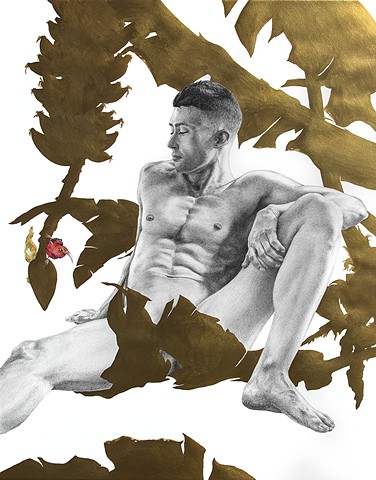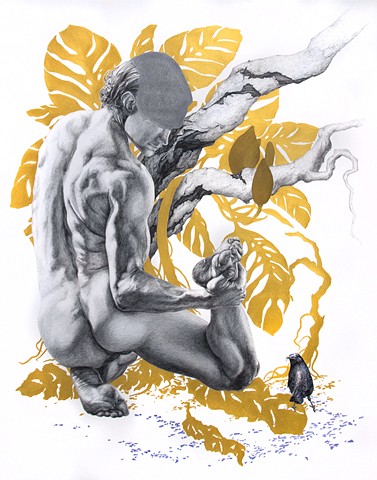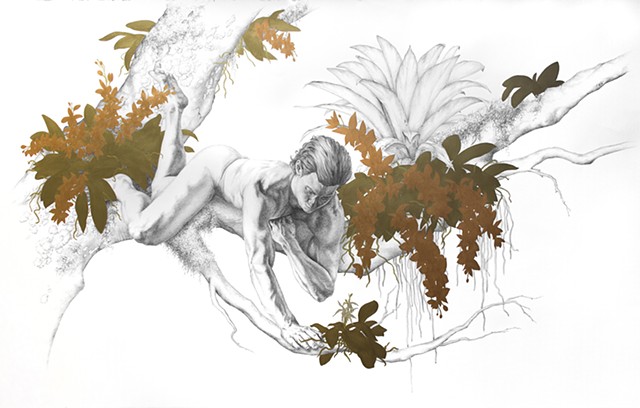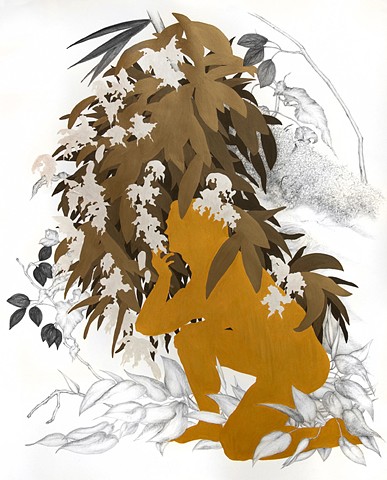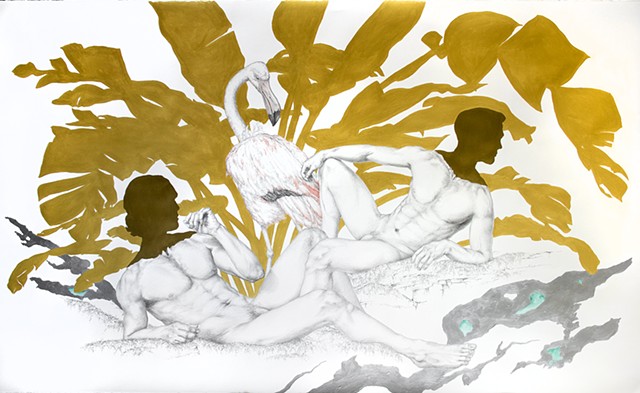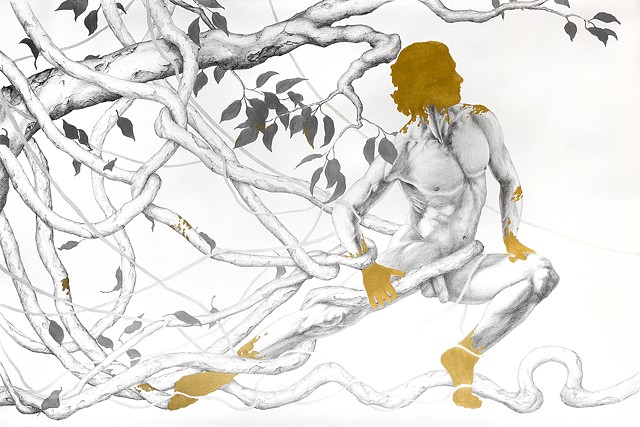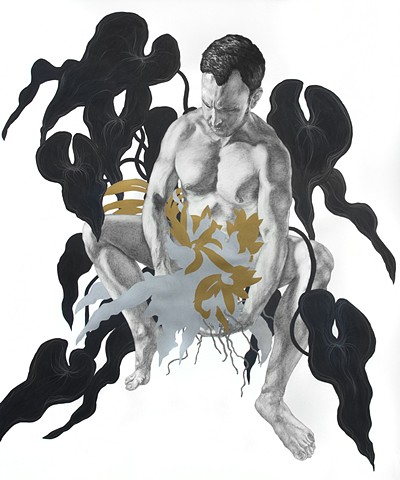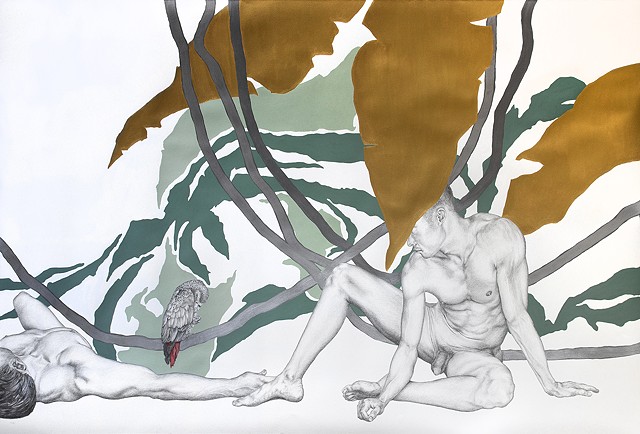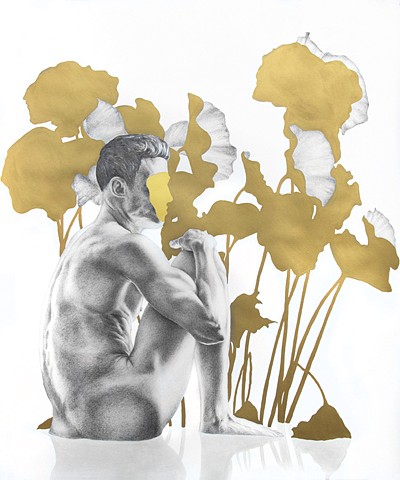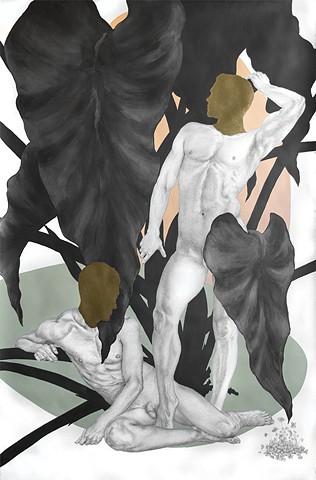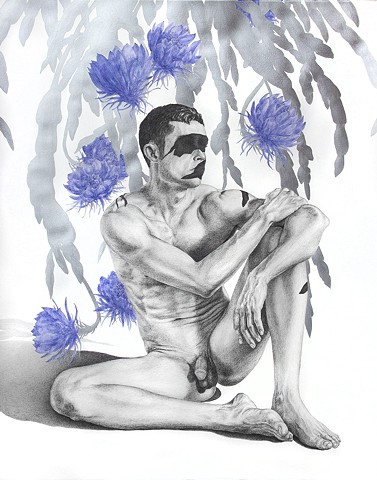"The Mattachine"
Mixed media on paper, 2018-2020
The title for this series is taken from The Mattachine Society, one of America’s earliest gay rights organizations. Formed in Los Angeles, 1950, the group’s name was inspired by French medieval and renaissance masque groups studied by a founding member while preparing a teaching course:
“One masque group was known as the ‘Société Mattachine.’ These societies, lifelong secret fraternities of unmarried townsmen who never performed in public unmasked, were dedicated to going out into the countryside and conducting dances and rituals during the Feast of Fools, at the Vernal Equinox. Sometimes these dance rituals, or masques, were peasant protests against oppression—with the maskers, in the people's name, receiving the brunt of a given lord's vicious retaliation. So we took the name Mattachine because we felt that we 1950s Gays were also a masked people, unknown and anonymous, who might become engaged in morale building and helping ourselves and others, through struggle, to move toward total redress and change.”
— Jonathan Katz, Gay American History. Crowell Publishers, 1976
Rendered with meticulous detail and a tightly controlled palette of reflective metallics and jabs of color, the figures’ faces in these works are obscured by paint, plants, shadows, or invented by the artist in the process of creating the work (with a few exceptions; the artist serves as an undisguised model twice in the series). These are men lost in thought - waiting, communing, tangling through overgrown flora - unaware they are watched. Our voyeurism exists between observation and objectification while lush surroundings further emphasize unfamiliarity, like wild creatures found in nature.
Complexly encoded in queer culture, anonymity has always found use as camouflage; for safety, privacy, as an added layer of sexual thrill, or to cautiously seek validation of one’s beauty. This series explores this while addressing ideas of anonymous intimacy, the sensationalism of the modern male nude, and how we actively curate our physical and emotional visibility.
